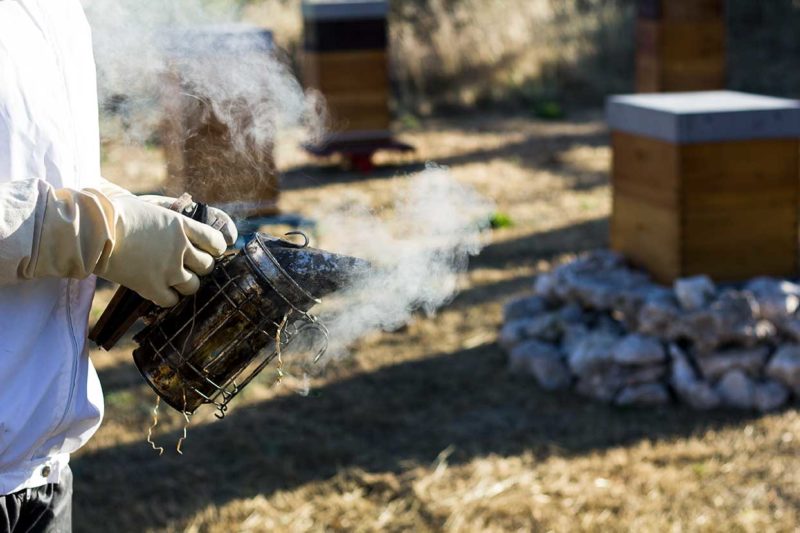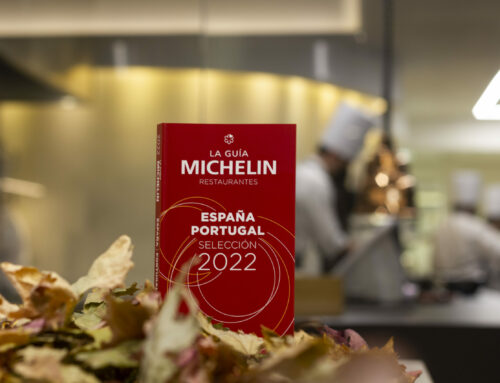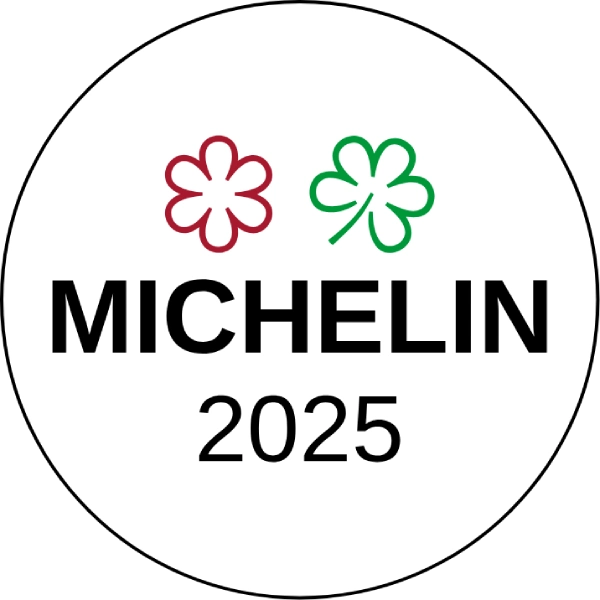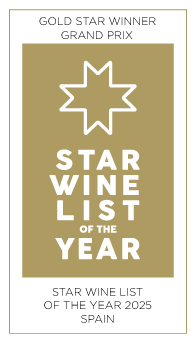THE BEES GAIN PROMINENCE AT ALMA CARRAOVEJAS
The plants and flowers around Ambivium and Pago de Carraovejas have had some new visitors for a few weeks now. The largest community at Alma Carraovejas is at its peak of activity these summer days. The queen, workers and drones how have six hives that are now their home.
What if we produced our own honey and offered it on the Ambivium menu? A few months ago we asked ourselves this question, and an affirmative answer is now slightly closer. Our curiosity led us to learn about insects that not only produce this sweet delicacy, but also other products such as propolis or royal jelly, while they also preserve and expand our ecosystem through pollination.
Bees are the hobby and passion of our beekeeper Fernando Antorán, who began by supplying us with honey and honeycombs for the restaurant, and who is now part of the working group that has made the installation of the six beehives possible.
As an addition to the landscape of the chosen location – known as Finca de Los Almendros – stones from Campaspero, a town near Peñafiel, have been placed next to the insect “hotels” that had previously been installed.
Bees have a complex organisation within each hive, with a series of ranks and occupations and different needs for breeding by which they produce a series. This is what we learned from Fernando during a training session that made us daydream about the hives that are part of our ecosystem.
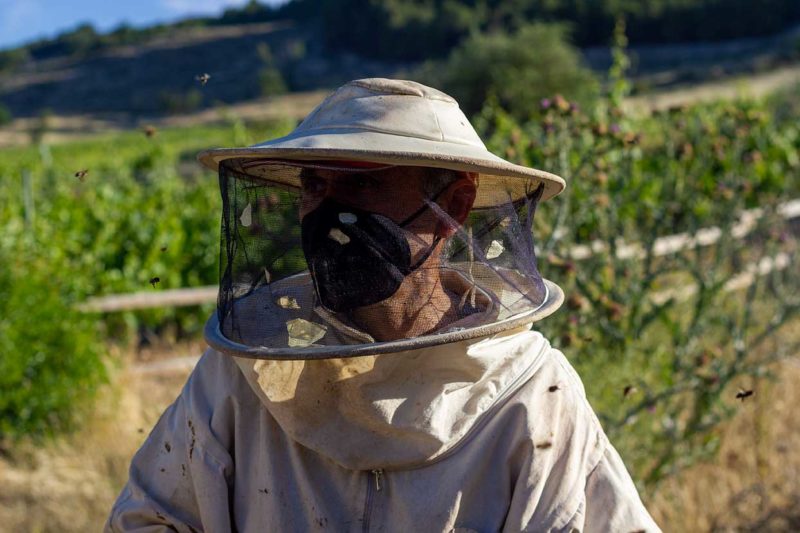
Each hive is a community of bees, consisting of a queen, workers and drones. The queen bee is the only female that can reproduce, and she also organises and motivates the workers with her pheromones. They are in charge of protecting the hive, building combs, caring for the queen, cleaning, polishing, feeding the brood, storing, collecting nectar, pollen and water, chewing the nectar and transforming it into honey through enzymes, and controlling the temperature inside the hive through ventilation with their wings. Drones fertilise the virgin queens.
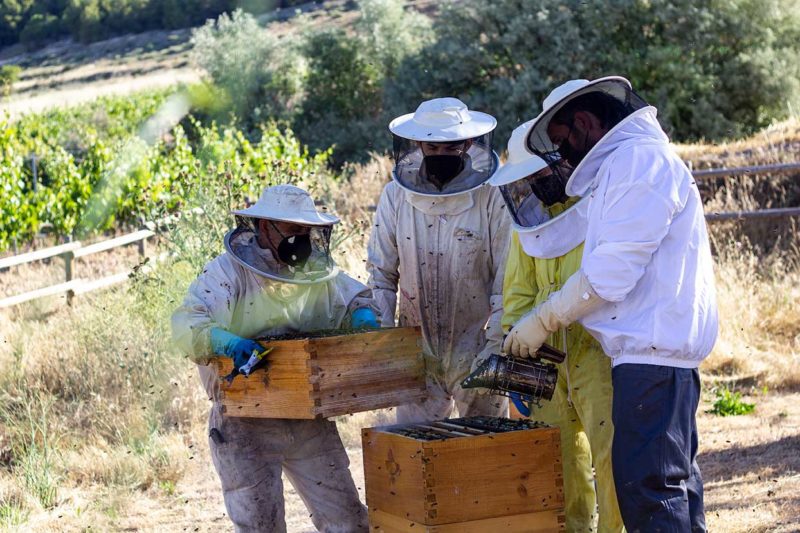
CURIOUS FACTS ABOUT BEES
CURIOUS FACTS ABOUT BEES
- Bees pollinate up to 170,000 plant species.
- A single bee can produce one and a half teaspoons of honey in its lifetime.
- To produce one kilogram of honey, a bee would have to visit 4 million flowers and fly four times the circumference of the earth.
- The queen in the hive is the only one that can lay eggs, and she is capable of laying around 1,500 eggs per day.
- A honeybee can fly up to 25 kilometres an hour and is the only species that dies after stinging.
Bees are the most industrious insects on our planet and have for centuries benefited people, plants and the environment. Thanks to them, pollen travels from one flower to another, enabling the production of fruits, nuts and seeds. This makes them more varied and of better quality, thus contributing to food security and nutrition.
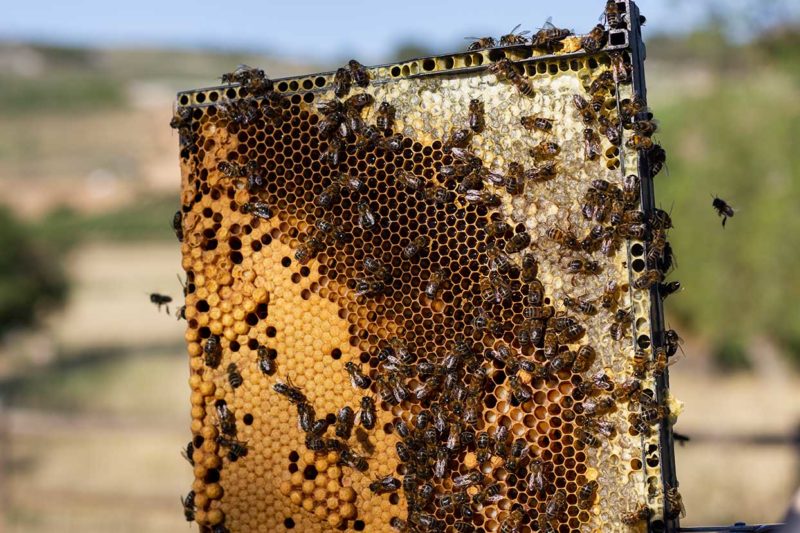
BEES IN AMBIVIUM`S FUTURE PLANS
Pero sin duda, las abejas son conocidas por producir un producto único, la miel. En un futuro próximo la idea es que produzcamos nuestra propia miel para ofrecerla en el menú de Ambivium, así como el polen en fresco, el propóleo, los panales, la cera o incluso nuestra propia hidromiel. ¿Y si el futuro está cada vez más cerca? Esperamos poder contaros muy pronto que todo esto se ha hecho realidad, pero mientras tanto contaremos con esta nueva gran comunidad volando y polinizando en los alrededores de nuestro entorno.
But bees are undoubtedly best known for producing a unique product, honey. In the near future the idea is that we will produce our own honey to offer on the Ambivium menu, as well as fresh pollen, propolis, honeycombs, wax or even our own mead. What if the future is getting closer and closer? We hope to be able to tell you very soon that all this has become a reality. But in the meantime we will have this great new community flying and pollinating in the vicinity.
